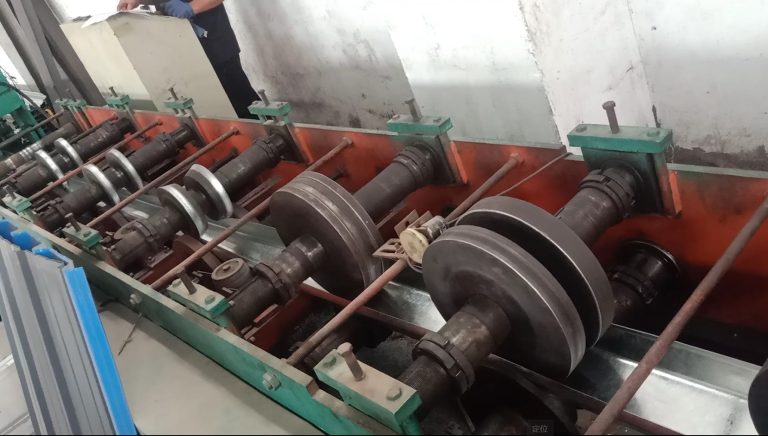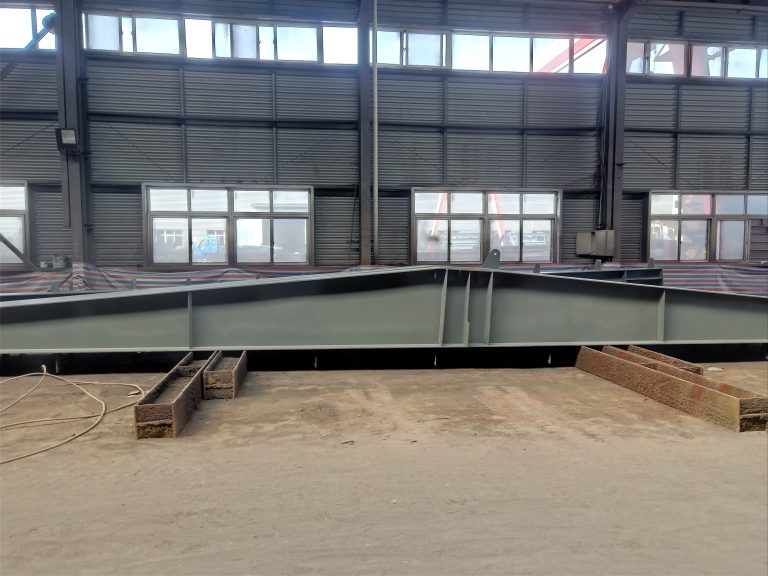Table of Contents
Sustainable Design Features of Steel Railway Station
Steel railway stations have become the modern hub of railway traffic, offering a sustainable and efficient solution for transporting passengers and goods. These stations are designed with a focus on sustainability, incorporating various features that reduce energy consumption, minimize waste, and promote environmental conservation.
One of the key sustainable design features of steel railway stations is their use of natural light and ventilation. By incorporating large windows, skylights, and open-air designs, these stations are able to maximize the use of natural light and reduce the need for artificial lighting. This not only helps to lower energy consumption but also creates a more pleasant and inviting environment for passengers.
In addition to natural light and ventilation, steel railway stations also utilize energy-efficient heating and cooling systems. By using high-efficiency HVAC systems, these stations are able to maintain a comfortable temperature for passengers while minimizing energy usage. This not only reduces the station’s carbon footprint but also helps to lower operating costs in the long run.

Another important sustainable design feature of steel railway stations is their use of recycled materials. Steel, in particular, is a highly recyclable material that can be reused multiple times without losing its strength or durability. By incorporating recycled steel into the construction of railway stations, designers are able to reduce the demand for new materials and minimize waste.
Furthermore, steel railway stations are designed with a focus on water conservation. By incorporating water-efficient fixtures and landscaping, these stations are able to reduce water usage and minimize runoff. This not only helps to conserve water resources but also reduces the station’s impact on the surrounding environment.
In addition to their sustainable design features, steel railway stations also prioritize accessibility and convenience for passengers. These stations are designed with multiple entry and exit points, as well as ample seating and waiting areas. This ensures that passengers can easily navigate the station and find a comfortable place to wait for their train.
Furthermore, steel railway stations are equipped with modern amenities such as Wi-Fi, charging stations, and information kiosks. These features not only enhance the passenger experience but also promote efficiency and convenience for travelers.
Overall, steel railway stations are a prime example of sustainable design in action. By incorporating natural light and ventilation, energy-efficient systems, recycled materials, and water conservation measures, these stations are able to reduce their environmental impact while providing a comfortable and convenient experience for passengers. As the demand for sustainable transportation solutions continues to grow, steel railway stations will play an increasingly important role in shaping the future of railway travel.
Impact of Steel Railway Station on Local Economy and Transportation Network
Steel railway stations have become the modern hub of railway traffic, playing a crucial role in the local economy and transportation network. These stations are not only functional but also aesthetically pleasing, with their sleek design and durable construction. The use of steel in railway station construction has revolutionized the way we think about transportation infrastructure, providing a strong and reliable foundation for the efficient movement of goods and people.
One of the key benefits of steel railway stations is their durability and longevity. Steel is a strong and resilient material that can withstand the wear and tear of constant use, making it an ideal choice for high-traffic areas such as railway stations. This durability ensures that the station can continue to operate efficiently for many years, reducing the need for costly repairs and maintenance.
In addition to their durability, steel railway stations are also highly customizable. Steel can be easily shaped and molded to create unique and innovative designs, allowing architects and engineers to create stations that are not only functional but also visually appealing. This flexibility in design allows for the creation of stations that reflect the local culture and heritage, adding to the overall aesthetic appeal of the area.
The impact of steel railway stations on the local economy cannot be overstated. These stations serve as important transportation hubs, connecting various regions and facilitating the movement of goods and people. This connectivity helps to stimulate economic growth by increasing access to markets and creating new opportunities for businesses to thrive. In addition, the construction of steel railway stations creates jobs and stimulates economic activity in the surrounding area, further contributing to the overall prosperity of the community.
Steel railway stations also play a crucial role in the transportation network, providing a reliable and efficient mode of travel for commuters and travelers. The use of steel in station construction ensures that the infrastructure is strong and stable, allowing trains to run smoothly and on time. This reliability is essential for maintaining a well-functioning transportation network, as delays and disruptions can have far-reaching consequences for the economy and society as a whole.
Furthermore, steel railway stations are environmentally friendly, as steel is a highly recyclable material that can be reused and repurposed. This sustainability makes steel an attractive choice for railway station construction, as it helps to reduce the environmental impact of transportation infrastructure. By choosing steel for railway station construction, communities can contribute to a more sustainable future and reduce their carbon footprint.
In conclusion, steel railway stations have become the modern hub of railway traffic, playing a vital role in the local economy and transportation network. The durability, flexibility, and sustainability of steel make it an ideal choice for station construction, providing a strong and reliable foundation for the efficient movement of goods and people. The impact of steel railway stations on the local economy and transportation network is significant, creating jobs, stimulating economic growth, and providing a reliable mode of travel for commuters and travelers. As we continue to invest in transportation infrastructure, steel railway stations will undoubtedly play a key role in shaping the future of our communities.







